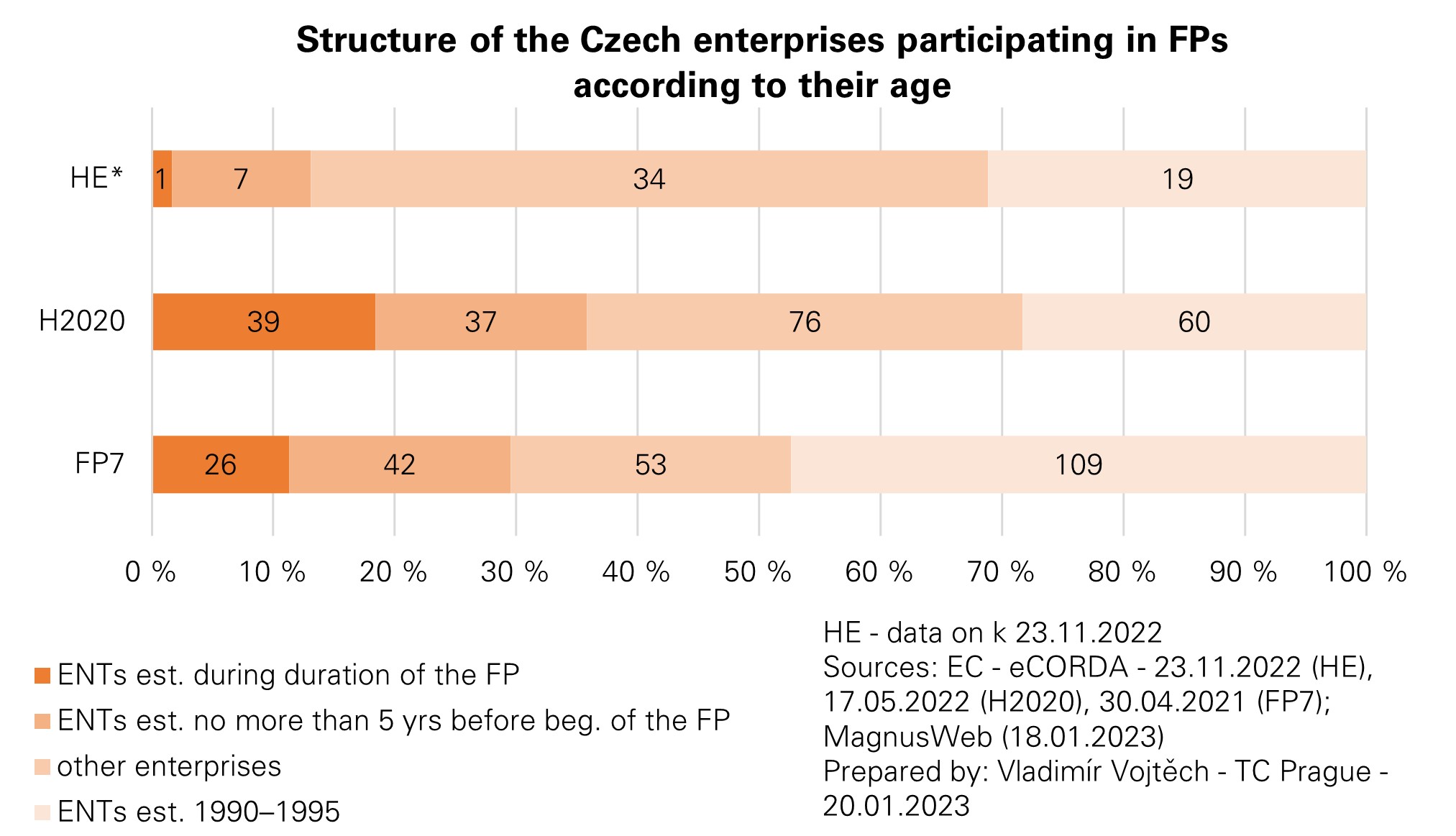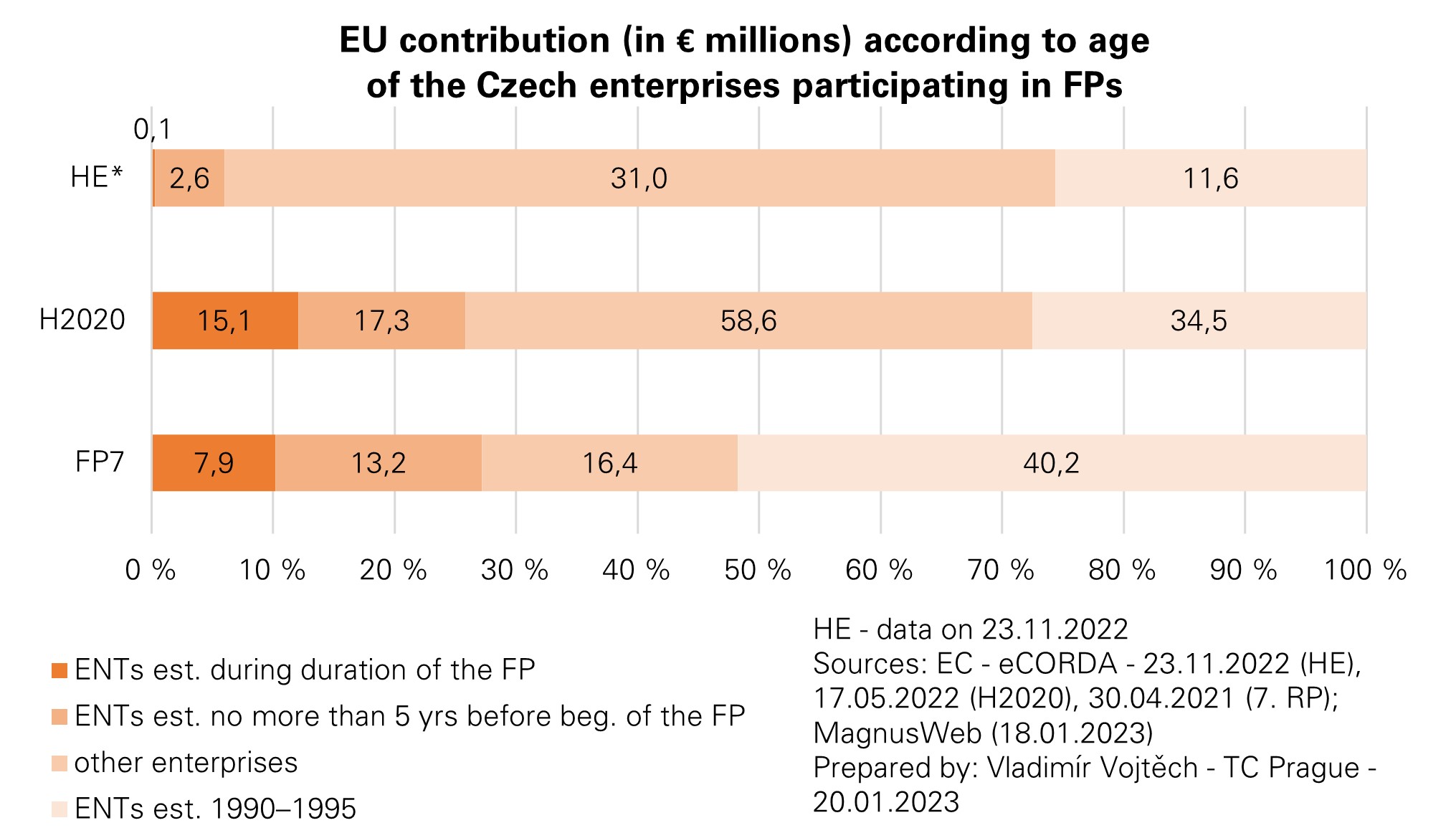Age of the Czech enterprises participating in Framework Programmes
01/20/2023

Previous posts from autumn 2022 dealt with the branch,size and geographical structure of enterprises participating in Framework Programmes. Age of these enterprises is also an indispensable indicator. Exempli gratia The Austrian Research Promotion Agency (FFG) uses this indicator in its impact evaluation for 2021 (p. 6, 7).
As in previous contributions, only participants of the beneficiary type, who have signed a grant agreement with the European Commission or are preparing to sign it, are evaluated. We are interested in how much "young" enterprises, that were established during the duration of framework programmes, participate in these programmes. The "older" enterprises, that were founded in the first half of the 1990s, are in our focus as well.
From the data on the Horizon Europe programme (as of November 23, 2022), it is not yet possible to draw conclusions – due to 86 corporate participations (61 unique organizations) with an EU contribution of €45.3 million and the short duration of the programme. On the contrary, in the case of the 7th Framework Programme and the Horizon 2020 programme certain regularities can be noticed.
230 enterprises (unique organizations) participated in the FP7, and 212 enterprises participated in the H2020 programme. The representation of the "youngest" enterprises among the participants of the framework programmes has increased, both in terms of participation and in terms of finances. There were 26 enterprises (i.e. 11%) established in the period 2007–2014, i.e. during the duration of the FP7. There were 39 enterprises (i.e. 18%) established in the period 2014–2020, i.e. during the duration of the H2020 programme. These enterprises were supported by one tenth of the EU contribution in the FP7 as well as in the H2020 programme. Examples of these enterprises in the FP7 are Flowmon Networks a.s. (information and communication activities) and Nanopharma, a.s. (development of nanomaterials); in the H2020 programme GoodAI Research s.r.o., Codasip s.r.o. (both information and communication activities), InoCure s.r.o. (development of nanomaterials).


The representation of enterprises established no more than five years before the start of the framework programme (i.e. in the period 2002–2006 for the FP7 and in the period 2008–2013 for the H2020 programme) was essentially unchanged in terms of participation. From the field of finances, it is possible to identify some differences – the representation of these companies fell from 17% to 14% between the FP7 and H2020 programme. On the contrary, the amount of the EU contribution increased from €13.2 million to €17.3 million.
The representation of so-called "older" companies is decreasing in terms of participation as well as finances. Enterprises established in the first half of the 1990s were represented in the FP7 by roughly half (109 organizations with an EU contribution of €40.2 million), but in the H2020 programme by only one quarter (60 organizations, €34.5 million).
Author: Vladimír Vojtěch, TC Prague, vojtech@tc.cz, 20.01.2023
